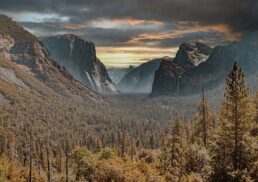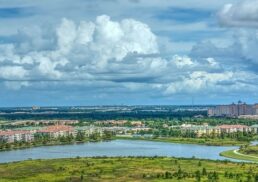Imagine a vast, cold desert with a unique ecosystem, stretching across Mongolia and China, rich in history and home to diverse landscapes and fascinating wildlife. The Gobi Desert, one of the largest deserts in the world and a significant part of Gobi Asia, offers a breathtaking journey through a region filled with sand dunes, mountains, and a vibrant cultural heritage. In this blog post, we will explore the wonders of the Gobi Desert, its historical significance, the diverse wildlife that inhabits it, the human impact on this fragile ecosystem, and the unforgettable travel experiences it offers.
Table of Contents
Key Takeaways
The Gobi Desert is a unique ecosystem in Asia featuring diverse landscapes and plant & animal life integral to its rich history.
Conservation efforts are necessary for the survival of endangered species, while community initiatives promote sustainable livelihoods & protect habitats.
The Gobi Desert offers travelers natural wonders, cultural heritage experiences, and photographic opportunities.
The Gobi Desert: A Unique Ecosystem in Asia
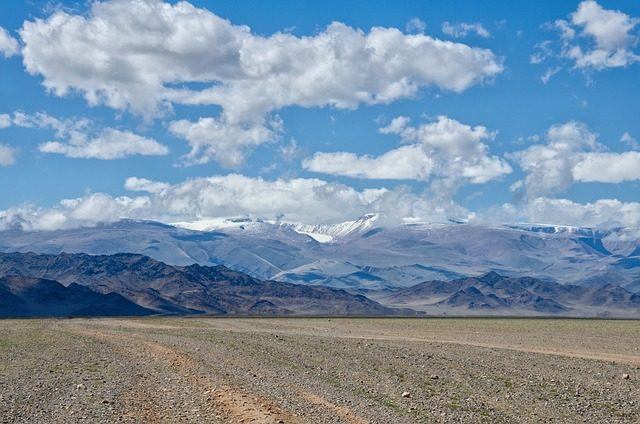
The Gobi Desert, spanning across the gobi desert region of southern Mongolia and northern China, covers an area of 500,000 square miles and is delineated by the Altai Mountains, Hangayn Mountains, and the Da Hinggan Range. This vast arid region, situated between the Tibetan Plateau and the eastern gobi desert steppe, boasts a unique ecosystem, with mountain ranges, and sand dunes, providing a diverse habitat for an array of plant and animal life.
The Mongolian Gobi Desert is divided into separate and independent desert basins, each with its own distinct characteristics. One such desert basin lying in the western Gobi is the Ala Shan Desert, a cold desert, while the Dzungarian Basin semi-desert lies further south. These diverse landscapes are not only visually striking but also play a significant role in shaping the Gobi’s rich history and the lives of nomadic herders who have roamed these arid lands for generations.
The Cold Desert Climate
Known for its extreme temperature fluctuations, the Gobi Desert experiences freezing winters and scorching summers. This cold desert features a distinctive basin, shaped by the harsh conditions that foster the growth of unique vegetation. Wild leek, for instance, thrives in the Alashan Plateau semi-desert, while sparse, drought-adapted plants populate the Eastern Gobi Desert Steppe.
Despite these inhospitable conditions, precipitation does occur in the Gobi Desert, with an annual average of 4 to 6 inches (100 to 150 mm). This limited rainfall, combined with the extreme temperatures, has shaped the Gobi’s distinct plant life, which has adapted to survive in this challenging environment.
Plant Life Adaptations
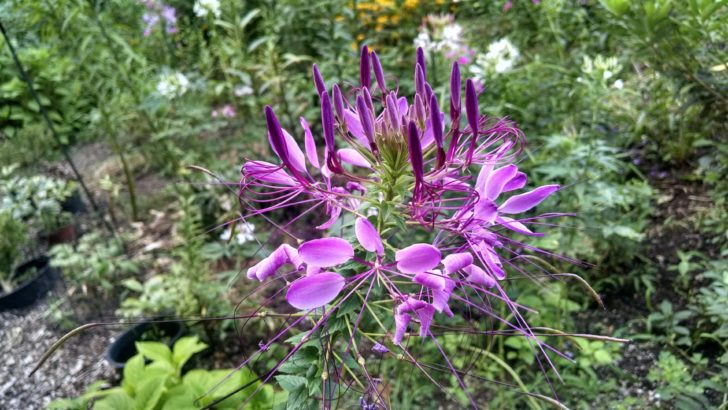
Gobi Desert plants have adapted to the arid climate by minimizing leaf size and extending roots for optimal water absorption. Notable examples include species like saxaul, elm, and poplar. The Gobi is also home to Haloxylon persicum, a leafless shrub that can reach up to 2 meters in height and is unique in its ability to dominate the Gobi’s cold-winter desert regions.
The ecological turnover of steppe species is pronounced along the climate gradient, particularly for genera such as:
Stipa
Astragalus
Caragana
Kobresia species
The ability of these plants to adapt and thrive in the Gobi’s harsh climate is essential for supporting the region’s animal life and preserving its unique ecosystem.
Historical Significance of the Gobi Desert
Throughout history, the Gobi Desert has played a significant role in shaping the world we know today. It has:
Served as a crucial trade route, connecting the East and West through the Silk Road
Facilitated cultural exchange
Been a center for human migrations for thousands of years
The region of Inner Mongolia has also been the site of numerous archaeological discoveries, including ancient fossils and the ruins of the Mongol Empire capital, Karakorum.
The Silk Road Connection
The ancient Silk Road passed through the Gobi Desert, linking China to the Mediterranean Sea and facilitating trade and cultural exchange between East and West. The Gobi Desert posed multiple challenges to traders, such as intense temperatures, lack of water and resources, and the possibility of bandit attacks. Merchants had to prudently plan their routes and make necessary preparations to traverse the desert, making the Gobi Desert a fundamental part of the Silk Road trade routes.
Commodities regularly exchanged along the Silk Road traversing the Gobi Desert included:
silk
horses
spices
tea
porcelain
other assorted exotic items
The Gobi’s role in the Silk Road trade routes has left a lasting impact on the region and its cultural landscape, contributing to the spread of Chinese culture and shaping the Gobi Desert’s rich history.
Archaeological Discoveries
The Gobi Desert is home to numerous archaeological discoveries that provide a glimpse into the region’s rich history. The Flaming Cliffs, a renowned paleontological site, is famous for its vast collection of dinosaur fossils and unique geological features, such as the Djadokhta formation dating back to the Cretaceous Period.
In addition to the Flaming Cliffs, the Gobi Desert boasts other significant archaeological sites, including ancient petroglyphs, the ruins of Khara Khoto, and rock tombs with associated findings. These discoveries offer a fascinating insight into the Gobi Desert’s historical significance and the people who once inhabited this vast and challenging landscape.
Wildlife of the Gobi Desert
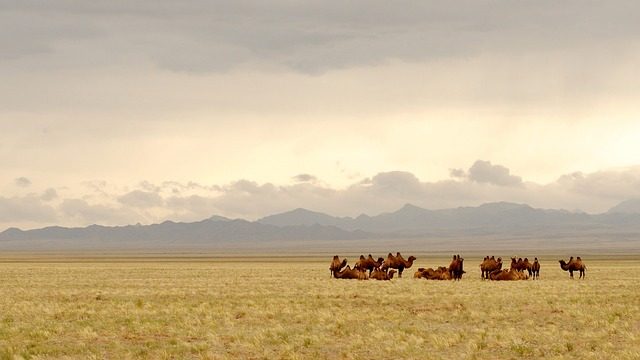
Diverse wildlife, including endangered species like snow leopards, wild Bactrian camels, and Gobi bears, find a home in the Gobi Desert. The region’s unique landscapes, from sandy desert basins to mountain ranges and grassy steppes, provide varied habitats for these animals and many others, including Asian wild asses, Saiga antelopes, black-tailed gazelles, and marbled polecats.
Nomadic herders have also long roamed the Gobi Desert, relying on the region’s sparse vegetation and scarce water sources to sustain their livestock, such as goats, sheep, and Bactrian camels. These herders and their animals have adapted to the harsh conditions of the Gobi Desert, making them an integral part of the region’s wildlife and ecosystem.
Endangered Species
Endangered species in the Gobi Desert face threats from habitat loss, climate change, and human activities, making conservation efforts crucial for their survival. Take the Gobi bear as an example; it’s a critically endangered species with an alarmingly low estimated wild population of fewer than 50 individuals.
Wild Bactrian camels and Saiga antelopes are also endangered species that call the Gobi Desert home. Conservation efforts in the Gobi Desert include:
The establishment of protected areas and wildlife reserves
Measures to protect these species and their habitats
Ensuring the survival of these species in the Gobi Desert’s unique ecosystem
These efforts aim to protect these endangered species and preserve the delicate balance of the Gobi Desert’s ecosystem.
Check out The Desert-dwelling Gobi Bear the Rarest Brown Bear.
Nomadic Herders and Their Livestock
Nomadic herders in the Gobi Desert have a lifestyle centered around animal herding, migrating regularly to maintain the land and relying on their livestock for food, clothing, and transportation. These herders typically raise sheep, goats, horses, camels, and cattle, depending on the region’s resources to sustain their animals.
The nomadic lifestyle is characterized by tending to animals and living in near autarky, where the family’s prosperity is closely associated with the prosperity of their herds. By understanding the herders’ way of life and the challenges they face in the Gobi Desert, we can better appreciate the delicate balance of human and animal life in this unique ecosystem.
Human Impact on the Gobi Desert
Human activities, such as mining and agriculture, have had significant impacts on the Gobi Desert’s ecosystem, leading to desertification and climate change. As the human population continues to grow and the demand for resources increases, it is essential to address these challenges and promote sustainable practices to protect the Gobi Desert’s unique environment and wildlife.
Mining Activities
Mining for resources in the Gobi Desert has led to environmental degradation and habitat loss. The Oyu Tolgoi mine, for example, is a major mining project in the region, extracting valuable resources but also causing pollution and depletion of groundwater resources.
Some of the negative impacts of mining in the Gobi Desert include:
Environmental degradation
Habitat loss
Pollution
Depletion of groundwater resources
These issues highlight the need for sustainable mining practices in order to minimize the negative effects on the environment and local communities.
These mining activities disrupt the environmental balance, affecting not only the Gobi Desert’s ecosystems but also the lives of local communities who depend on the region’s resources for their livelihoods. Implementing sustainable mining practices and minimizing the negative impacts of these activities is crucial for preserving the Gobi Desert’s unique environment and supporting the region’s wildlife.
Desertification and Climate Change
Desertification in the Gobi Desert is exacerbated by climate change and increasing numbers of domesticated animals, such as goats. As temperatures rise and precipitation decreases, the region’s soil and vegetation dry out, resulting in the loss of vegetation and habitat for the Gobi’s diverse wildlife.
Efforts to combat desertification and climate change in the Gobi Desert include promoting sustainable agricultural practices and reducing the environmental impacts of human activities. By addressing these challenges and implementing effective conservation measures, we can help protect the Gobi Desert’s unique ecosystems and ensure the survival of its incredible wildlife.
Exploring the Gobi Desert: Travel and Tourism
The Gobi Desert offers unique travel experiences for those seeking adventure, from exploring natural wonders like sand dunes and mountains to immersing oneself in the region’s rich cultural heritage. Travelers can witness the breathtaking landscapes and vibrant cultural experiences that make the Gobi Desert a truly unforgettable destination.
The Gobi Desert, with its stunning natural scenery, ancient monasteries, and a glimpse into the nomadic lifestyle, caters to a range of interests, making it a versatile destination for all. Let’s explore some of the must-see attractions and experiences that await you in the Gobi Desert.
Natural Wonders
One of the Gobi Desert’s most famous natural attractions is the Flaming Cliffs, a major paleontological site with unique geological features and a vast collection of dinosaur fossils. The striking red sandstone cliffs, especially vibrant during sunrise and sunset, provide an ideal backdrop for photography enthusiasts and offer a glimpse into the region’s rich history.
In addition to the Flaming Cliffs, the Gobi Desert is home to stunning landscapes perfect for stargazing, photography, and exploration. With its clear, cloudless skies and remote location, the Gobi Desert offers an unparalleled opportunity to witness the beauty of the night sky and the vast expanses of this incredible desert.
Cultural Experiences
The Gobi Desert offers a range of natural wonders and cultural experiences for visitors to enjoy. Some of the cultural experiences include:
Staying with local families in their traditional gers
Participating in daily activities such as herding livestock and milking animals
Engaging in traditional ceremonies
These experiences provide a unique opportunity to immerse yourself in the nomadic lifestyle of the region.
Visitors can also explore the region’s ancient monasteries, such as the Khamar Monastery, Gandan Monastery, and the Erdene Zuu Monastery, which provide a fascinating insight into the region’s history and religious heritage.
Traditional festivals, such as the Camel Festival and the Thousand Camel Festival, showcase the deep-rooted nomadic culture of the Gobi Desert and offer unique experiences for travelers to immerse themselves in the local customs and traditions.
Conservation Efforts in the Gobi Desert
Conservation efforts in the Gobi Desert focus on:
Protecting wildlife and their habitats
Establishing protected areas and wildlife reserves
Promoting sustainable practices among local communities
Involving local residents in community-based conservation projects
Preserving the environment and promoting sustainable livelihoods
Protected Areas and Wildlife Reserves
Protected areas and wildlife reserves in the Gobi Desert, such as the Great Gobi B Strictly Protected Area and the Ikh Nart Nature Reserve, aim to preserve the region’s unique ecosystems and support endangered species. These reserves safeguard the habitats of species such as snow leopards, wild Bactrian camels, and Gobi bears, ensuring their survival in the Gobi Desert’s diverse ecosystem.
Wildlife reserves and protected areas contribute to the conservation of the Gobi Desert by:
Safeguarding critical habitats
Maintaining the ecosystem’s delicate balance
Preserving biodiversity
Supporting the livelihoods of communities that rely on the region’s resources.
Community-Based Conservation Initiatives
Community-based conservation initiatives in the Gobi Desert involve:
Participatory analysis and planning with local communities, local government, and other stakeholders
Efforts to protect the environment
Promotion of sustainable livelihoods
Long-term sustainable development
Preservation of species
The establishment of community-led protected areas is an example of a thriving community-based conservation initiative. These initiatives:
Facilitate the recovery of endangered species
Enhance local livelihoods
Involve local residents in the management of their environment
Promote sustainable practices
Help to protect the Gobi Desert’s unique ecosystems
Ensure the survival of its incredible wildlife
Summary
The Gobi Desert, with its unique ecosystem, rich history, and diverse wildlife, is a remarkable destination that offers unforgettable travel experiences and valuable insights into the delicate balance between nature and human activities. From exploring natural wonders and delving into the region’s historical significance to understanding the challenges faced by its wildlife and the importance of conservation efforts, the Gobi Desert provides a captivating journey into one of the world’s most fascinating environments.
Frequently Asked Questions
What is the Gobi known for?
The Gobi Desert is renowned for its natural resources such as copper, gold and coal deposits, with Oyu Tolgoi being one of the world’s largest copper and gold mines. Additionally, it is a notable site for dinosaur species discovery.
What country is Gobi from?
Gobi is from Mongolia, a country north of China with a rapidly changing economy. The Gobi Desert covers the southern part of Mongolia as well as the northern and northwestern parts of China, covering 1.3 million square kilometers.
Is the Gobi Desert hot or cold?
The Gobi Desert is classified as a cold desert, with average winter temperatures dropping as low as -40°C and summer temperatures reaching up to 45°C. Additionally, the plateau it rests on contributes to its extreme temperature ranges, with frost and snow occurring throughout the year.
Does Gobi mean desert?
Yes, Gobi means desert; the word comes from Mongolian and is used to refer to all of the waterless regions in the Mongolian Plateau, while in Chinese Gobi is used to refer to rocky, semi-deserts such as the Gobi itself rather than sandy deserts.
What is the best time to visit the Gobi Desert?
Visiting the Gobi Desert is best done during the autumn months of August to October, with September and October providing the most pleasant weather.








